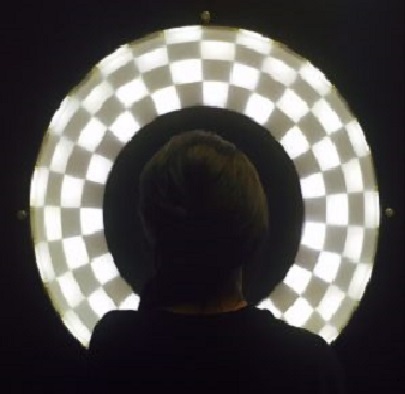Peripheral Pattern Electroretinography
PPE 1

Central Pattern ERG
Functional loss of cells precedes any structural changes in the retina. These functional changes can be detected through various electrophysiological test. The pattern ERG is one such test, where signals are recorded in responses to a reversing high contrast checkerboard or grating pattern.
Due to a strong ganglion cell contribution to the measured waveform, pERG is said to have relatively high efficacy for glaucoma detection when compared to other electrophysiological tests of visual function. However, the conventional pERG test targets the central 20-30 degrees of visual field, leaving nearly 80% of the retina underexplored.
PPE 2

Peripheral pattern ERG test, a 3-D hemispherical dome consisting of four circumferential rows and 30 radial columns
Evaluating ganglion cell dysfunction in these regions could help in early detection, enabling earlier disease management, thereby minimizing vision loss. The Peri-Stim is a peripheral pattern ERG (ppERG) test that can probe the mid- to far-peripheral regions of the retina by presenting a high luminance checkerboard pattern. Advantages of this novel system include: the system’s ability to reach high luminances resulting in larger signal amplitudes, increasing the signal to noise ratio and reducing test time.
Read More: Patangay et al.